It’s been a while since I posted here, for lack of time but especially motivation. However, I have sewn a lot since last November, and I’m a little disappointed not to have this archive of my projects. So I’m taking advantage of the release of the Dressed e-book (which took us so much energy – I’m can’t even tell you how relieved I am that it is finally out!) to do a recap of the projects of this book that I sewn for myself. Be warned, it will be a long read!
1. LE T-SHIRT
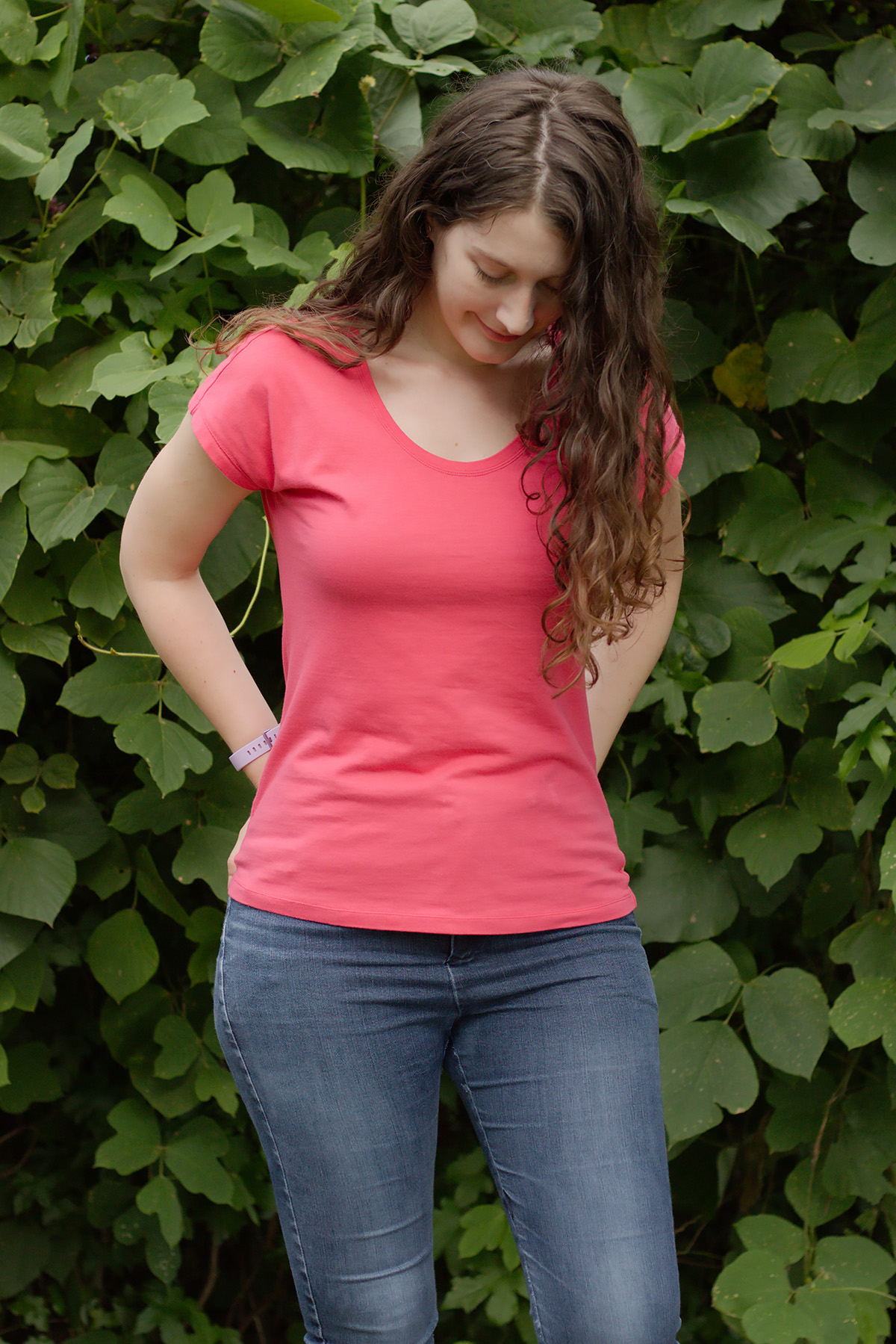
The t-shirt can look a little boring at first, but it’s the pattern from the book I’ve sewn the most. Not counting the versions pictured in the book, I have three in my closet already, and a few more just waiting to be cut. For this first one, I used Robert Kaufman’s Laguna jersey knit – in the Flamingo colorway, of course. It’s a fabric that I really like for these kinds of projects: easy to sew, very comfortable to wear, and that comes in a multitude of colors. In general, I’m quite a fan of fabrics from this brand when it comes to basics and solids. As for the t-shirt, I love it and wear it all the time. With the grown-on sleeves, I find it even more comfortable than my Plantain t-shirts, and the color is so cheerful in these tough times.

My second is also sewn in a Robert Kaufman jersey knit, this time from the Topia collection. It’s interesting because, although the base may be the same, the print makes the fabric stiffer. This t-shirt is therefore a bit less comfortable than the previous one, but with such a pretty print everything is forgiven.

My third is sewn in a modal jersey found at Jo-Ann. Modal is a special type of viscose made from beech pulp, and since I had never sewn with it before I wanted to try it. I’m not sure if it’s this particular fabric or if it’s just not the season to wear modal, but I really don’t like wearing it at all: it is very warm but it It also retains a lot of perspiration and does not dry well, it attracts dust and creases easily… No, I definitely don’t like it. I already had an American Apparel modal mockneck tee which I didn’t like wearing but I didn’t make that connection. Too bad, it was worth a try!
2. LA JUPE
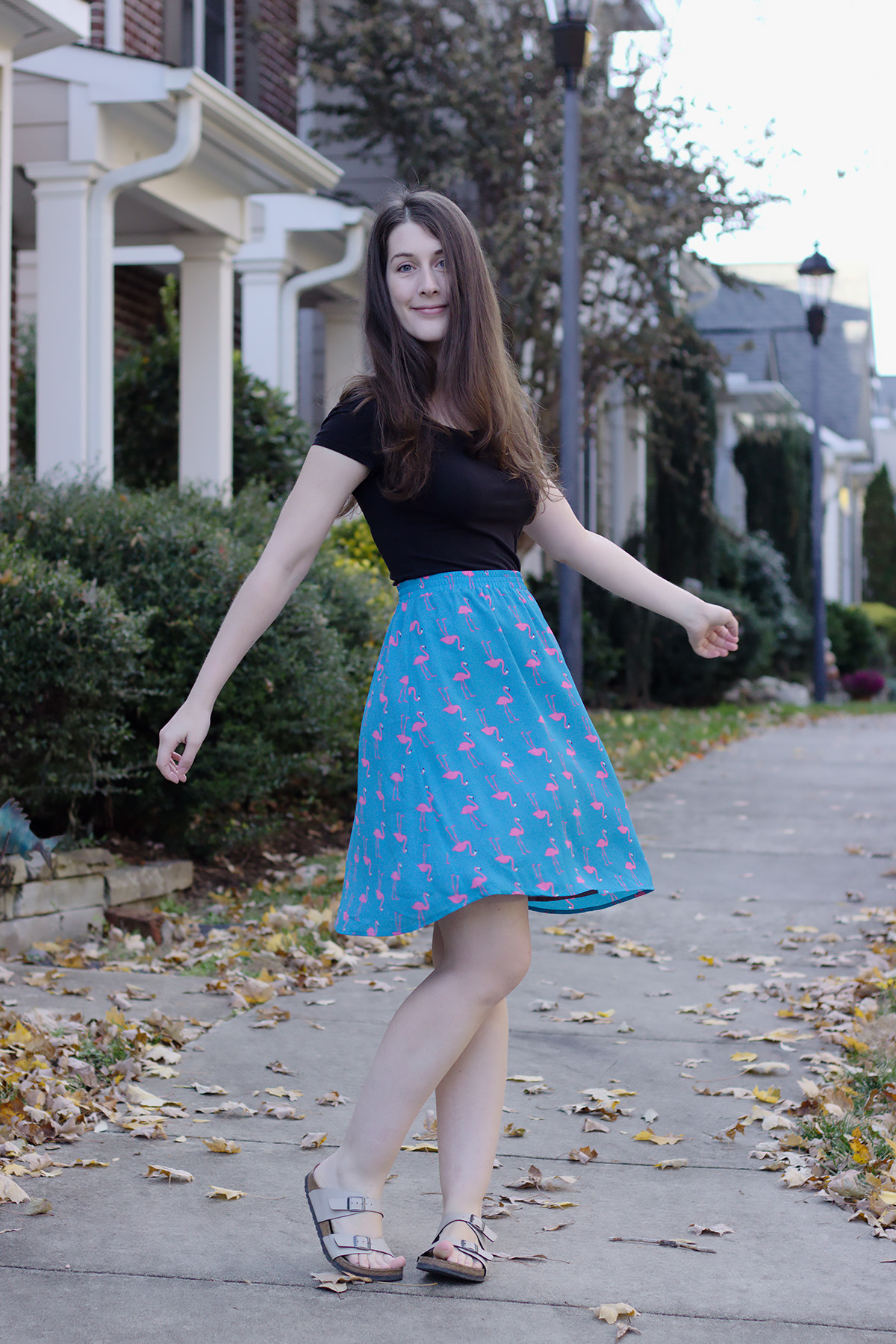
The skirt is, along with the t-shirt, one of the simpler patterns in the book, but by far my favorite. I’ve sewn two versions of it for myself (so far!) and I get compliments every time I wear one or the other in public. I know I’m not objective, but I find both the length and flare to be absolutely perfect. Feminine without looking too youthful or dated, which can be difficult especially for a midi skirt. Especially since I never wear heels, so midi lengths can easily make my legs look like tree trunks.
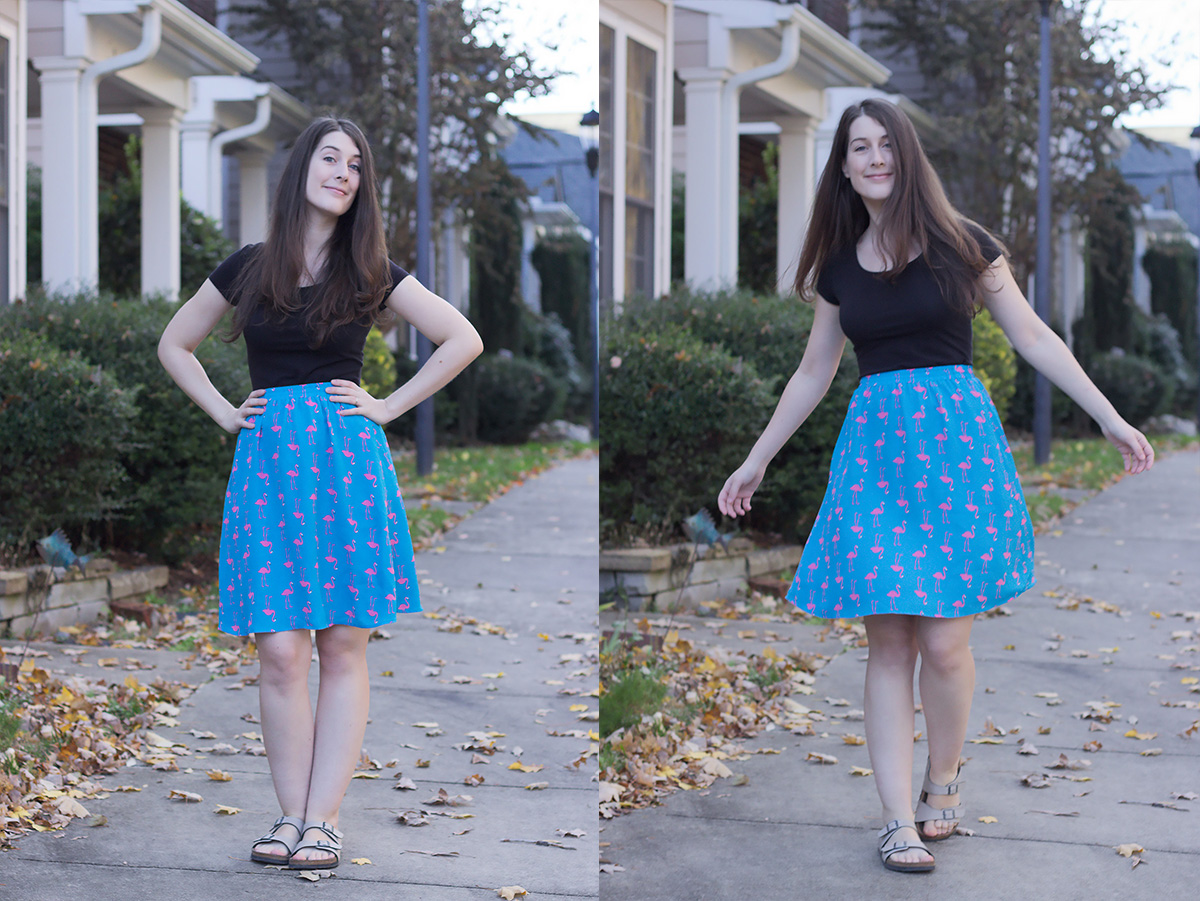
The first one I made is version B (knee length) in a Telio polyester crepe (with flamingos, obviously) that I bought a few years ago. The trick with this skirt is to choose your size based on your hip measurement and not your waist measurement so you can put it on it easily. Well, even then, with my waist to hip ratio I still need to put it on over the head so I don’t tear up the waistband (guess how I found out…).
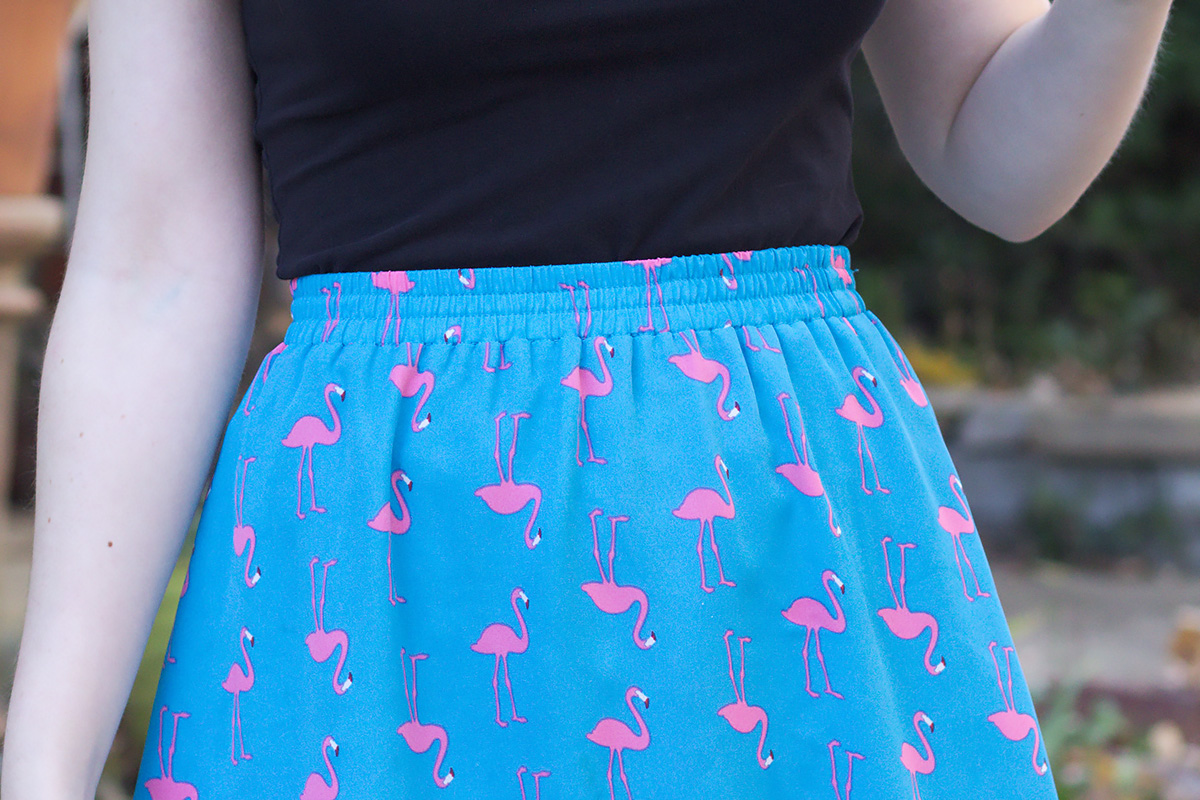
With this skirt I discovered “underwear and pajamas” elastic, which is much more comfortable than classic ribbed or knit elastics. It is ideal for waistbands because the width doesn’t shrink when it’s stretched and it is flexible and follows your body perfectly. The only issue is that, unlike more rigid elastics, it tends to fold onto itself in the casing. To remedy this I sewed a couple stitch lines as shown in the book, and I love the look.
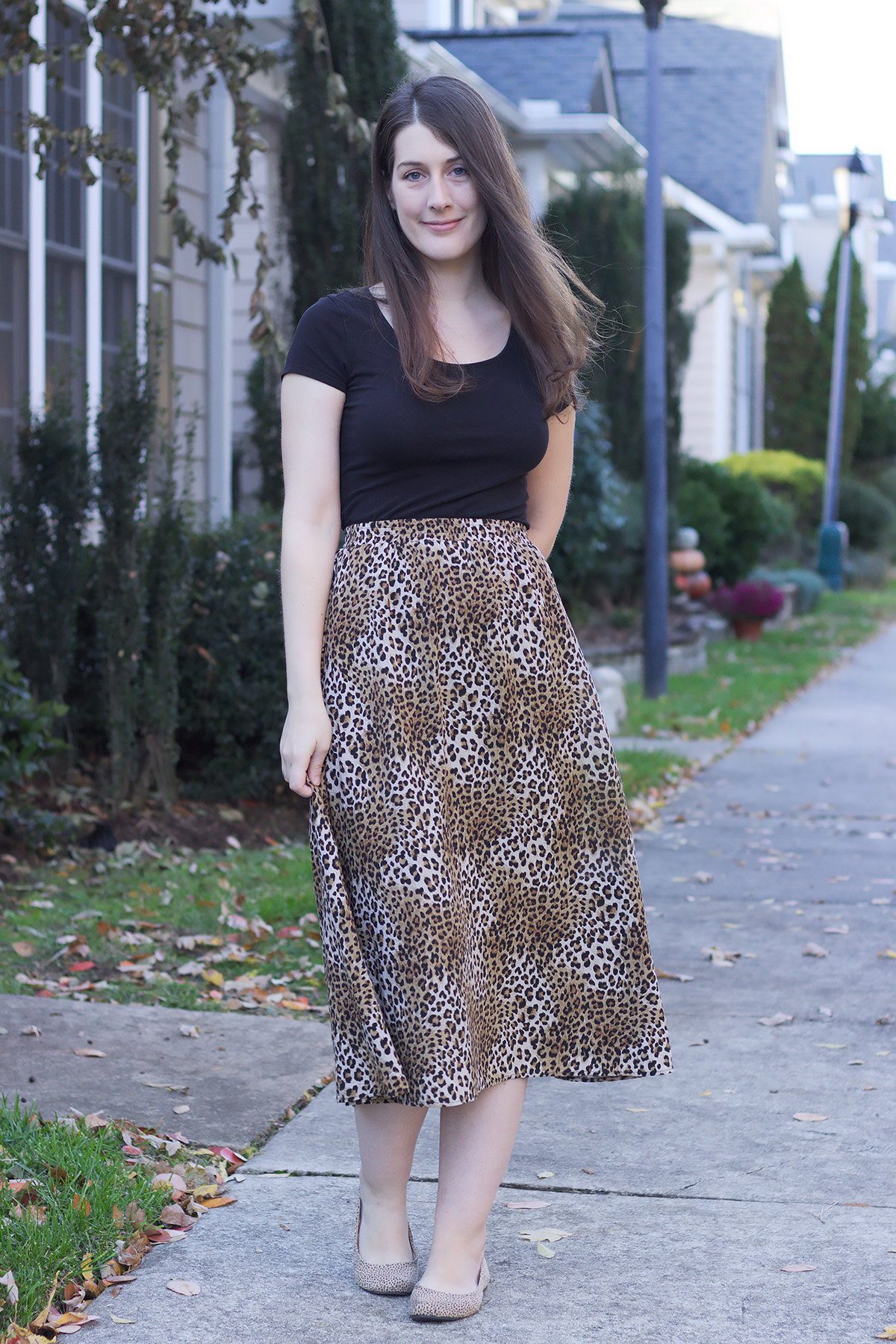
My second skirt, in the midi length version, is sewn in a sumptuous 105 g/m² rayon from Blackbird Fabrics. I love it because it is really fluid and super comfortable. Both skirts are lined in Bemberg. I only use Bemberg for linings now: so fluid and slippery so as not to cling on anything, but at the same time very fresh and pleasant in summer, I find that this fabric is well worth its price (which, it must be said, is quite high ). I also topstitched the waistband for this skirt, I really prefer it that way.

3. LE COL MONTANT
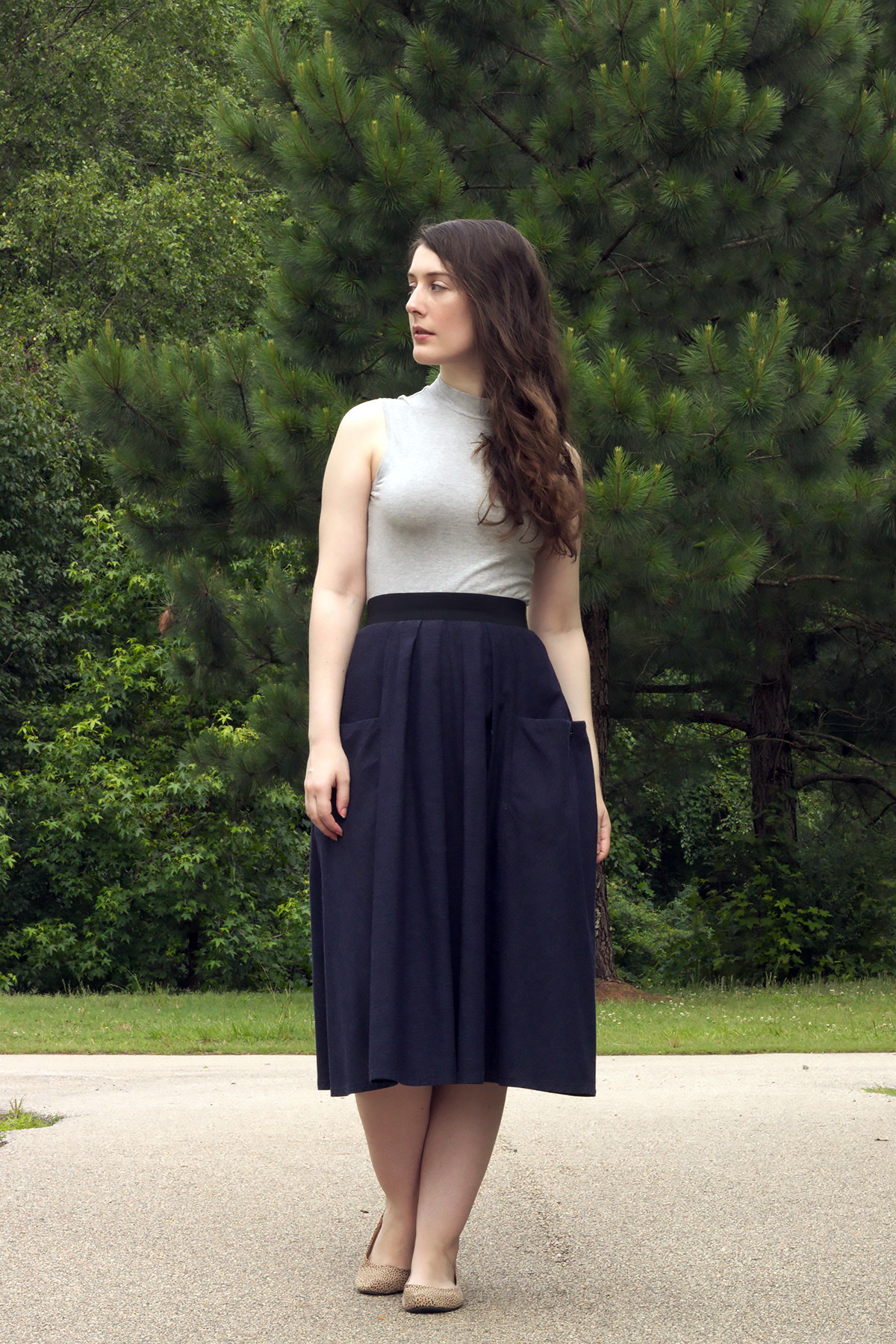
The mockneck is one of the nice surprises from the book for me, because as much as I was convinced from the start by the long-sleeved version, I had some doubts about the practicality of the sleeveless version when Eléonore first brought it up. And yet, since I sewed it I have worn it a lot! In fact it is a perfect basic for transitional weather: it’s not too warm, but it still provides a lot of coverage. Plus I find that the height of the collar suits my long neck particularly well.
I sewed this version in Laguna jersey knit, just like my first t-shirt, and I already have two fabrics in my stash to sew the long-sleeved version for fall: a forest green rayon jersey knit and a light gray ribbed knit. The latter is in modal but it looks much better quality than my black jersey knit, so we’ll see how it turns out!
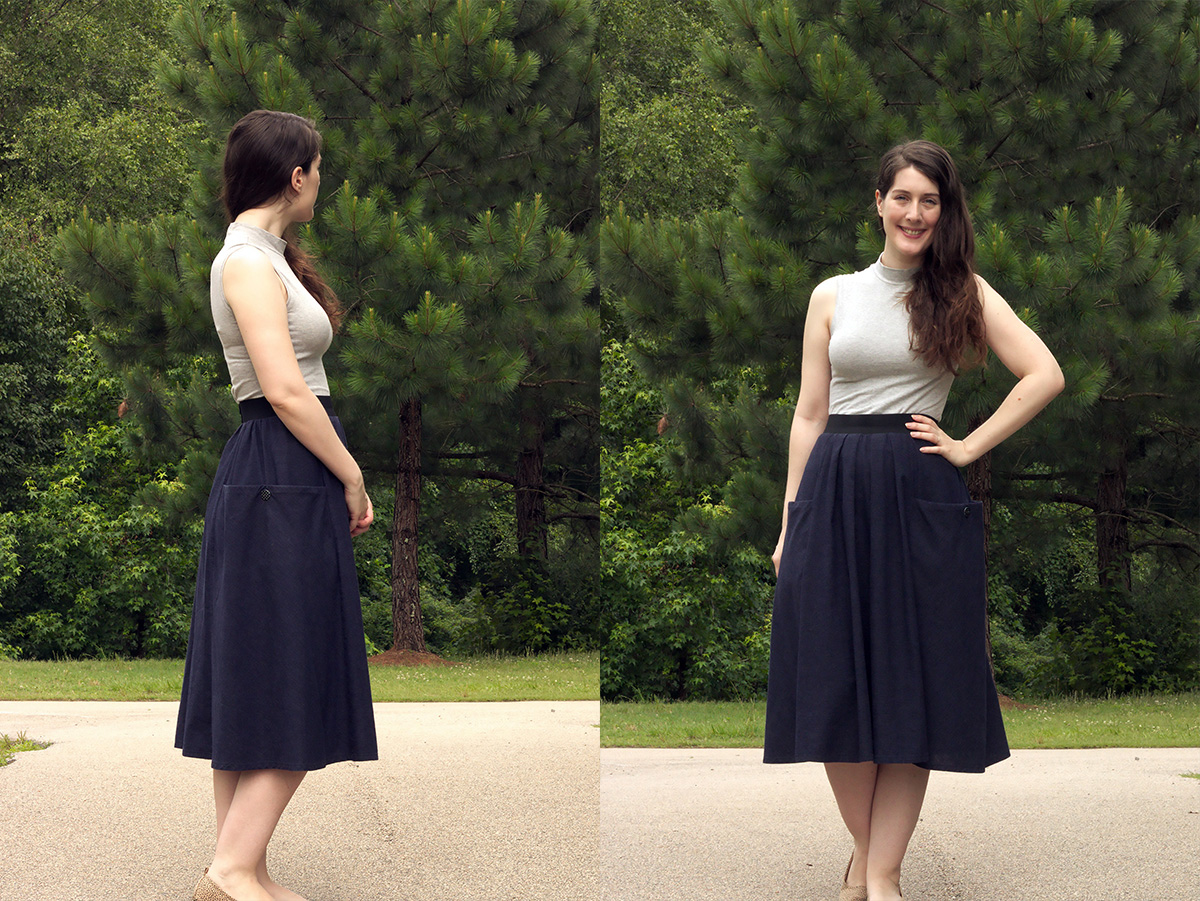
4. LA ROBE
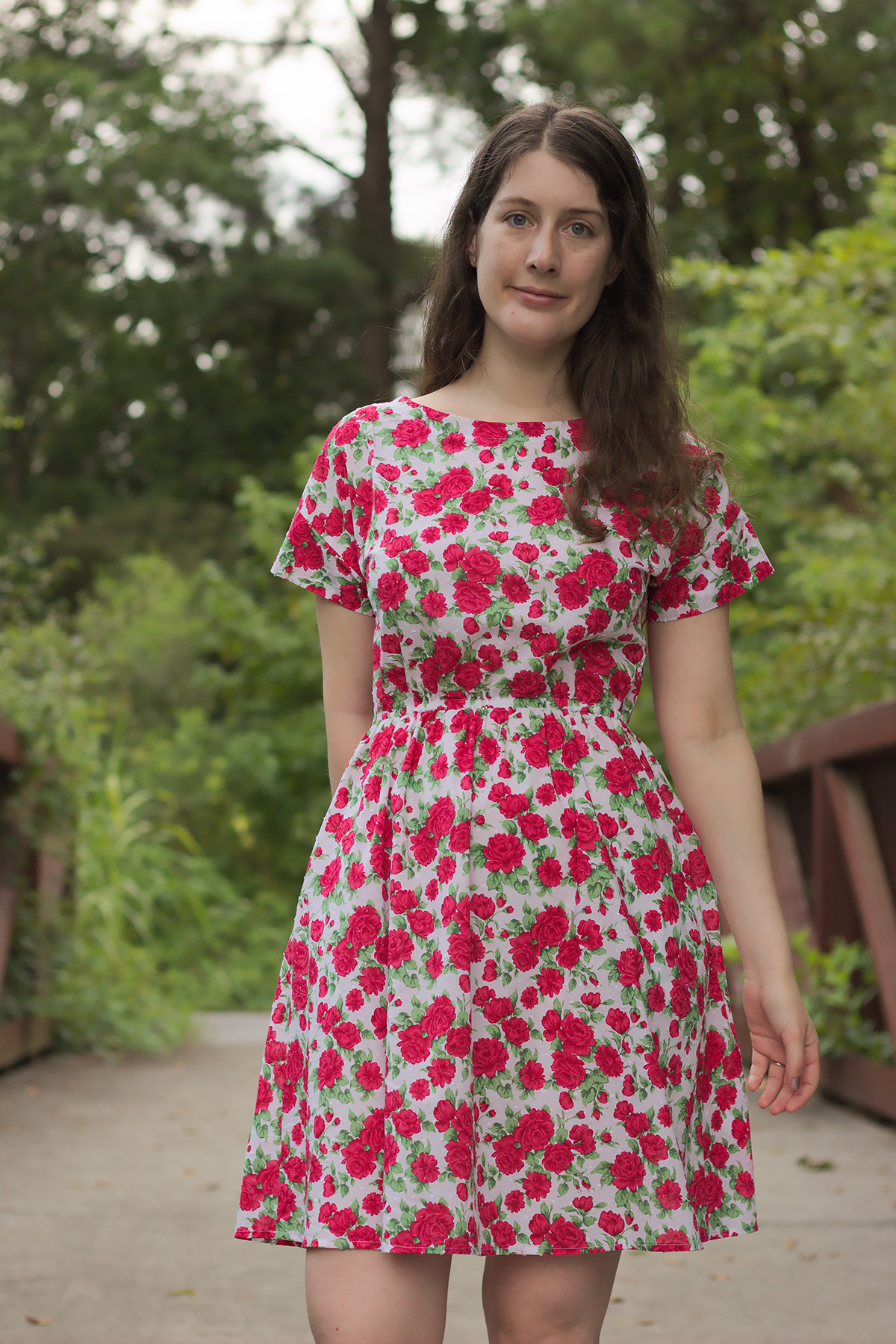
I know, I know, every time I try a new dress pattern I tell you it’s my favorite… but this dress! That boat neck, those cap sleeves, that elasticated waistband that has just the right amount of gathering… In short, I love it. I had already sewn a red version at Christmas, in a rayon-linen found at Mulberry Silks (a wonderful but very expensive store near where I live), but as it was for the Deer & Doe blog I don’t count it as a personal project.

So I made a new version to celebrate the release, still with the knee length. The fabric is a “mock-Liberty” swiss dot, from a Gertie collection for Jo-Ann dating back to mmmh… 2014 I would say? I had bought 3 yards because I thought it was lovely but I never really knew what to do with it, especially as my style had become a little less retro in the meantime. But considering that I’m trying to empty my stash right now, I went for it and I’m delighted because I love the result! The swiss dot is very light and comfortable to wear, and I find that the pattern and the print go together very well, romantic without looking too girly. I don’t have a midi version of the dress yet, but I made several muslins during testing and I love the look on me, so it will probably happen at some point.

5. LA BLOUSE
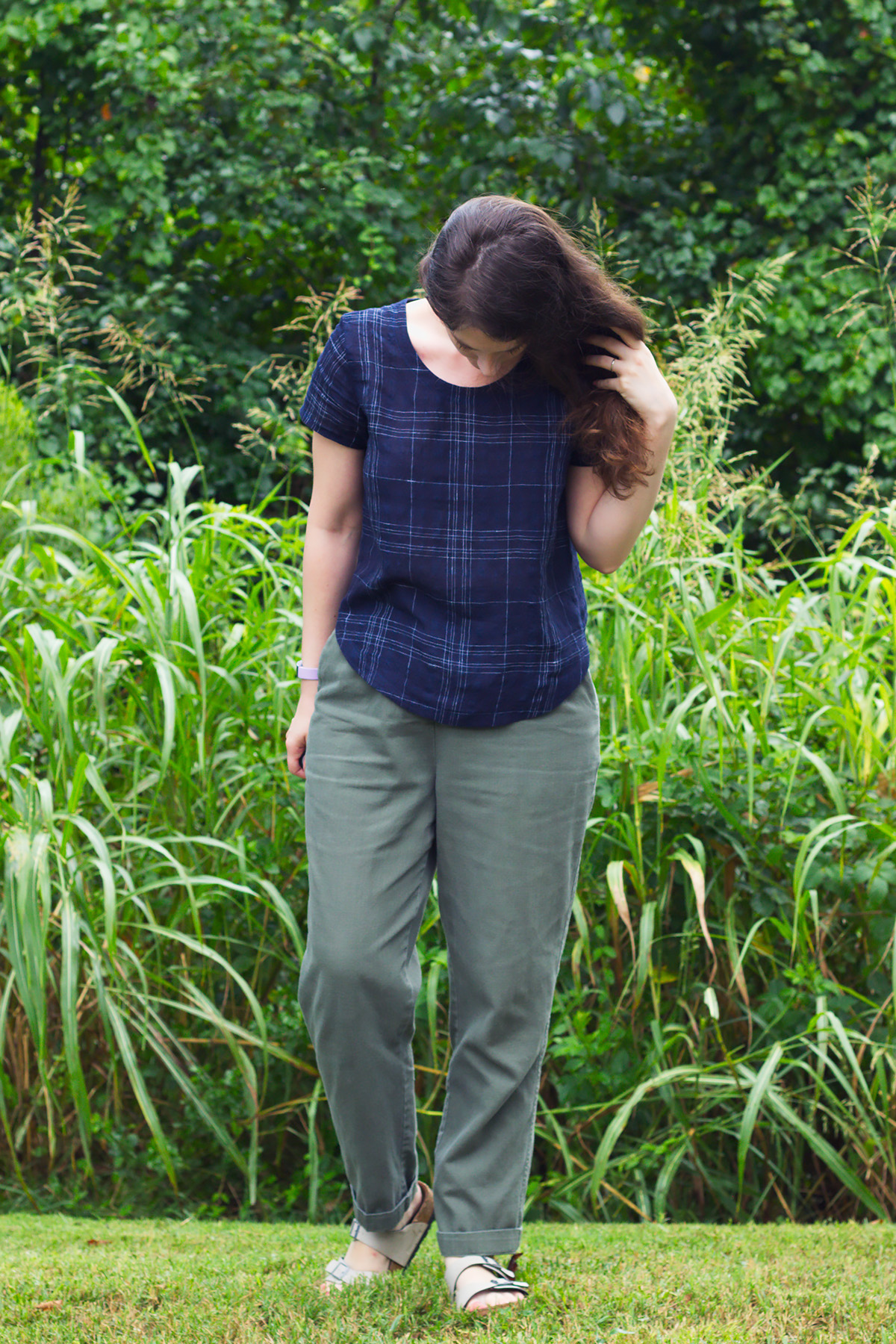
From the moment it was created, the blouse was promoted instantly as my go-to pattern for woven tees. It dethroned the Scout Tee, which I liked but wasn’t exactly right: the Dressed blouse is longer, and with its rounded hem I find it easier to wear with pants, whether completely out like in these photos or with a French tuck.
I really wanted to make a lightweight white rayon version, just like the one in the book, but after sewing all the samples for the photoshoot I needed something easier to sew. So I went instead a very lightweight Telio checked linen, which was still woven pretty loosely so not that easy to sew in the end. I was quite disappointed after pre-washing it, because not all the threads shrunk the same amount so the fabric is wavy in a way that is impossible to iron out, but in the end I got used to it and the result is simply more casual that I intended. I really that this is a blouse that works for several seasons: the checks feel a little like fall, but the lightweight linen is perfect for summer.
I have a fabric in my stash reserved for the dress version: a lovely blue knit velvet that is stable enough for the pattern. I wanted to sew it last winter but I didn’t have time, so with a little motivation it will be made in time for this year’s celebrations (it’ll be perfect to celebrate Christmas at home by ourselves..!).

6. LE CHEMISIER
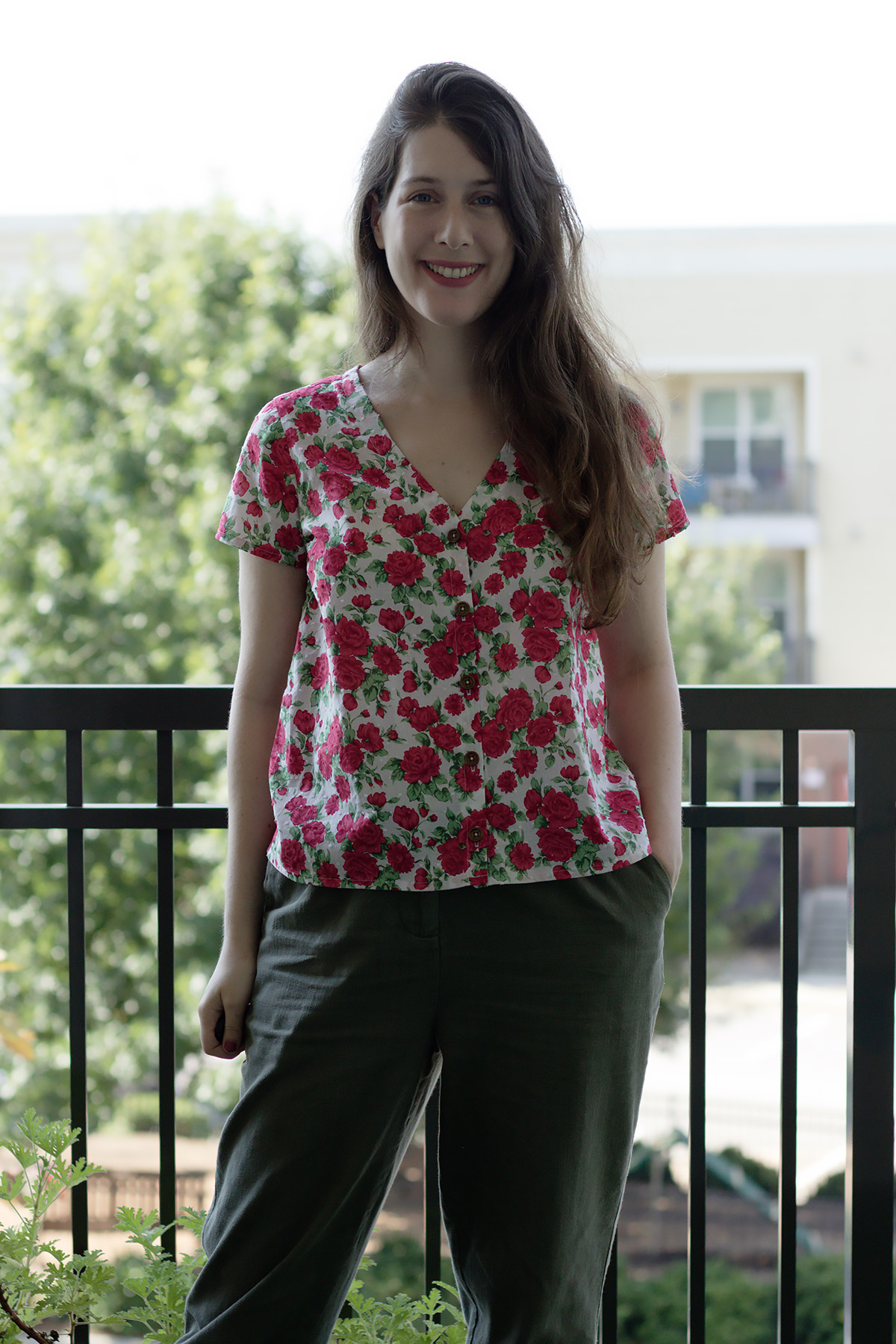
Initially I didn’t really intend to sew a version of the button-down blouse for myself. As I work from home, the comfort level of my clothes always outweighs their wearability in a more formal setting, so I never wear button-down blouses, shirts and the like. But I had enough fabric left over from the dress and I was already writing this article and it’s the only pattern I was missing, so I figured it was worth giving it a shot. I imagined I would probably wear it as pajamas (hence the backlit photos on my balcony where you can’t see anything, because I don’t go outside in my pajamas…).
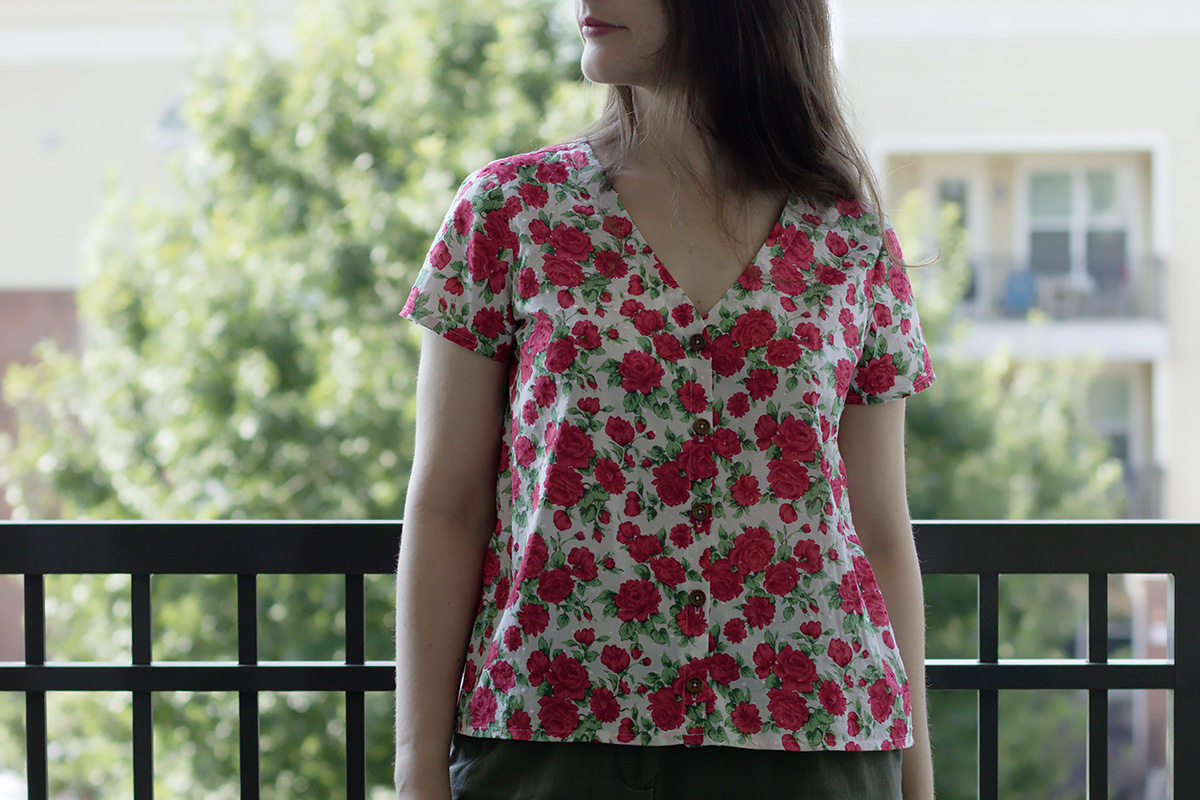
Turns out in the end I like it more than I expected. I’m still not 100% sure that a button down blouse + floral swiss dot is completely my style, but the delicate neckline and comfort got the better of me. I still have a little trouble pairing it with other clothes in my wardrobe: I prefer wearing it over pants than tucked in, but all my pants seem to me either too wide or too tight for the proportions to work. It still requires a little experimentation, but at worst if it ends up as pajamas it’s not too bad, it won’t have cost me much.
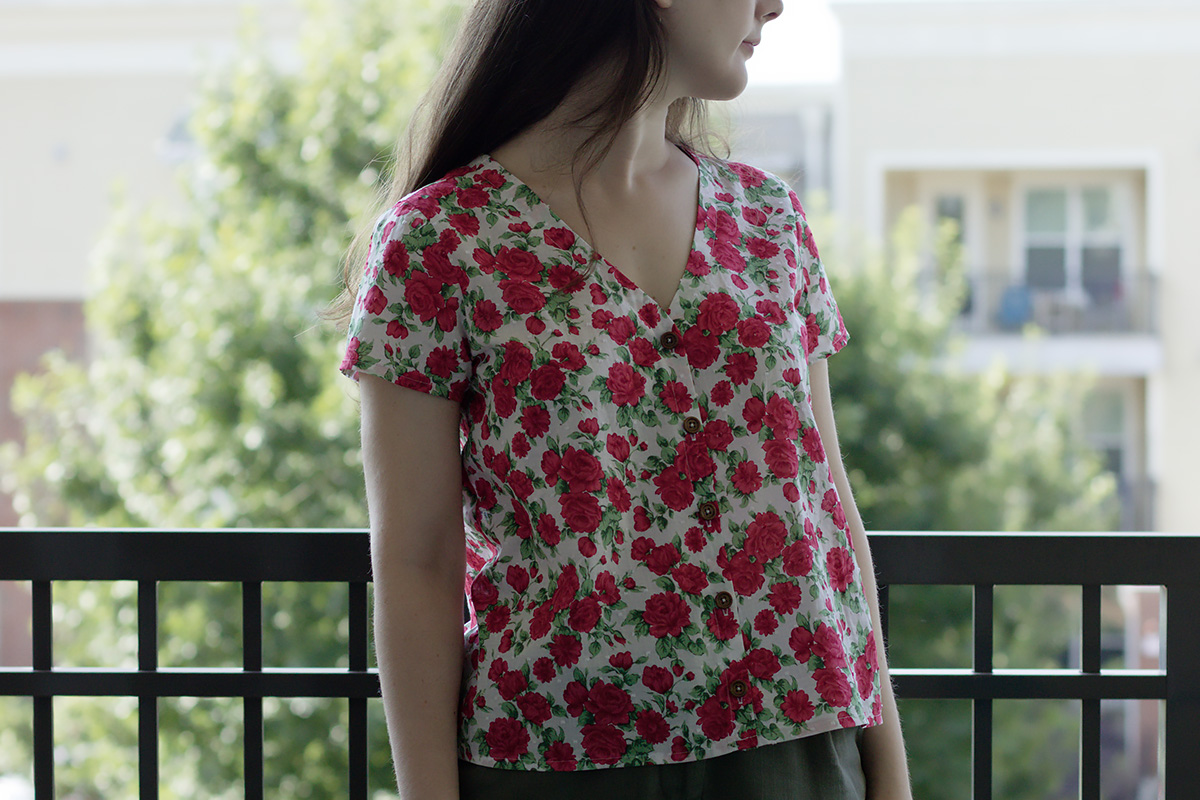
7. LE PANTALON

If you’ve been following the French sewing community, you’ll know that the pants pattern was the most successful pattern of the book and by far. I am amazed to see some sewists make it five or six times, and it is so rewarding considering the enormous amount of time spent refining this pattern. For my part, I wasn’t sure at the beginning that these pants were right for me: I only wear high-waisted pants, and it had been years since I’ve had low-waisted or even “normal” pants in my wardrobe, even longer with elasticated-waist pants. Basically, I was afraid they’d look like pajamas.
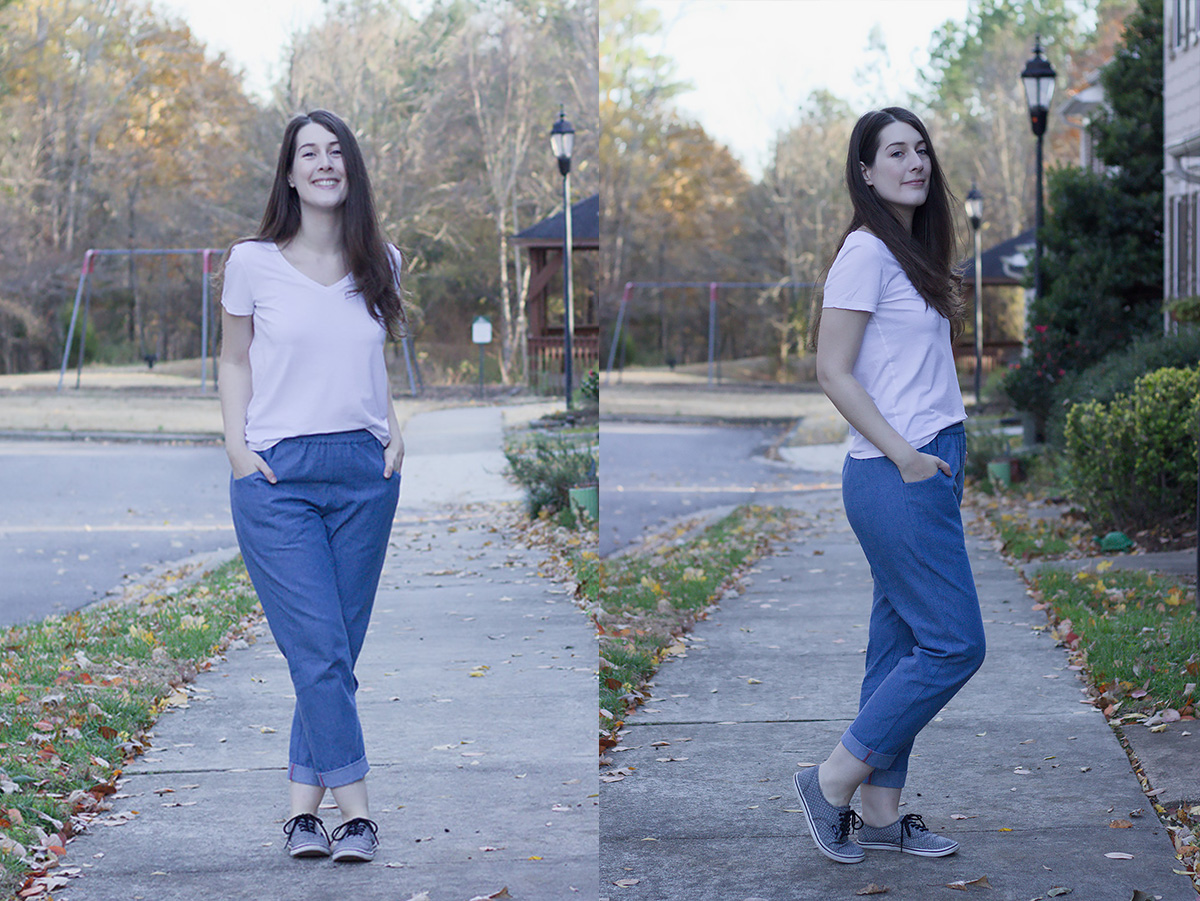
For my first version, which is actually the last muslin of this pattern (after about a million intermediate ones), I used an almost lightweight Robert Kaufman denim that I had in stock. The fabric isn’t exactly suitable: it would be better if it was either drapier or had a little stretch so that it would be really comfortable, but I used what I had on hand. In the end, even without elastane, these pants were already pretty comfortable and I liked the style, so I decided to sew myself another pair in a drapier fabric to have super comfortable pants to wear in summer.
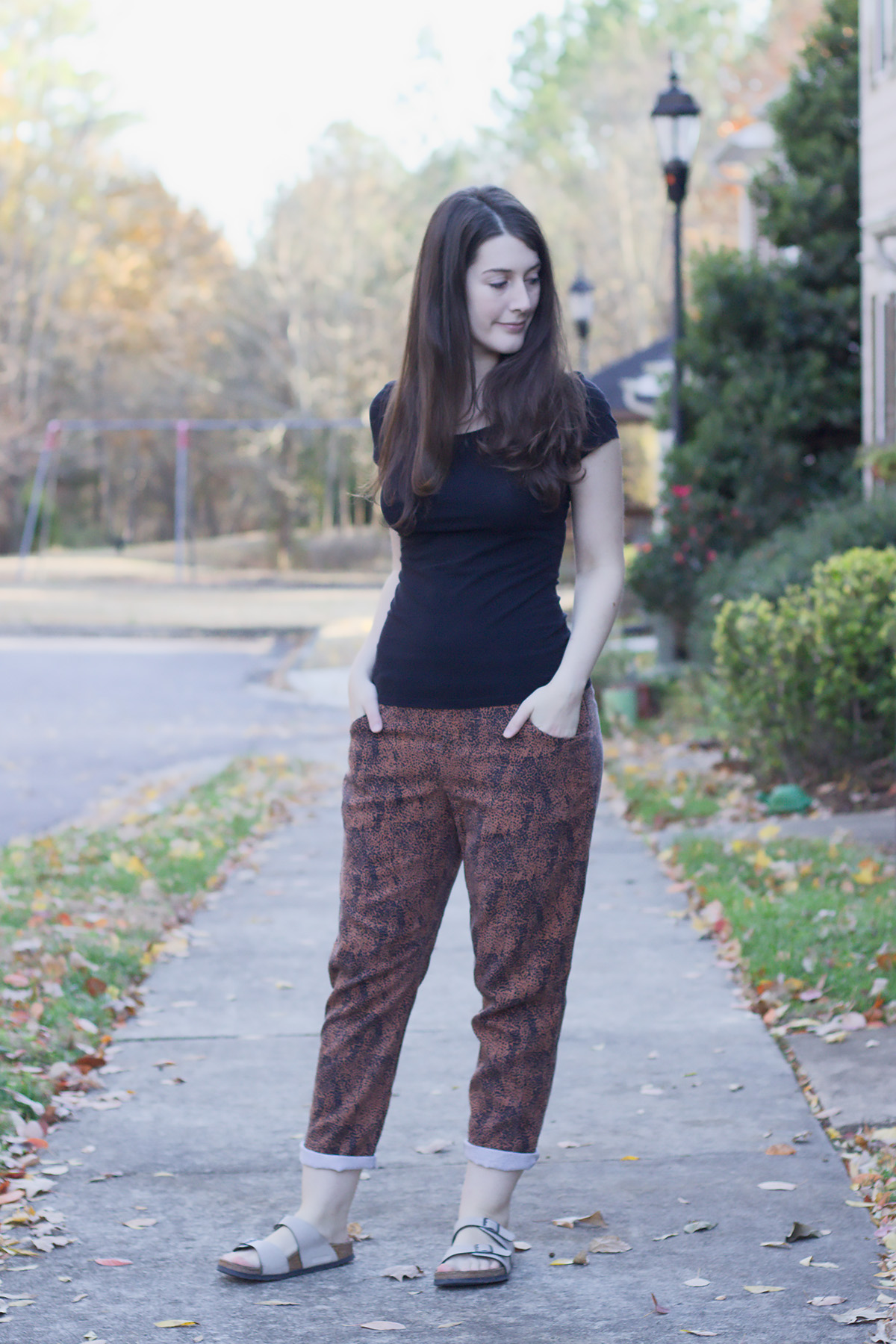
For this second version I used a leopard tencel twill from Blackbird Fabrics (seen previously on Jasika Nicole). I wore these pants a lot last summer and during my vacation in Mexico. I used the same elastic as for the skirts, but this time I didn’t topstitch it. The elastic has a slight tendency to fold when I take the pants off or put them on, but once they’re on it stays in place so I didn’t topstitch and I like how it looks as is. I don’t have a shorts version yet because well, I don’t really lack shorts, but never say never…
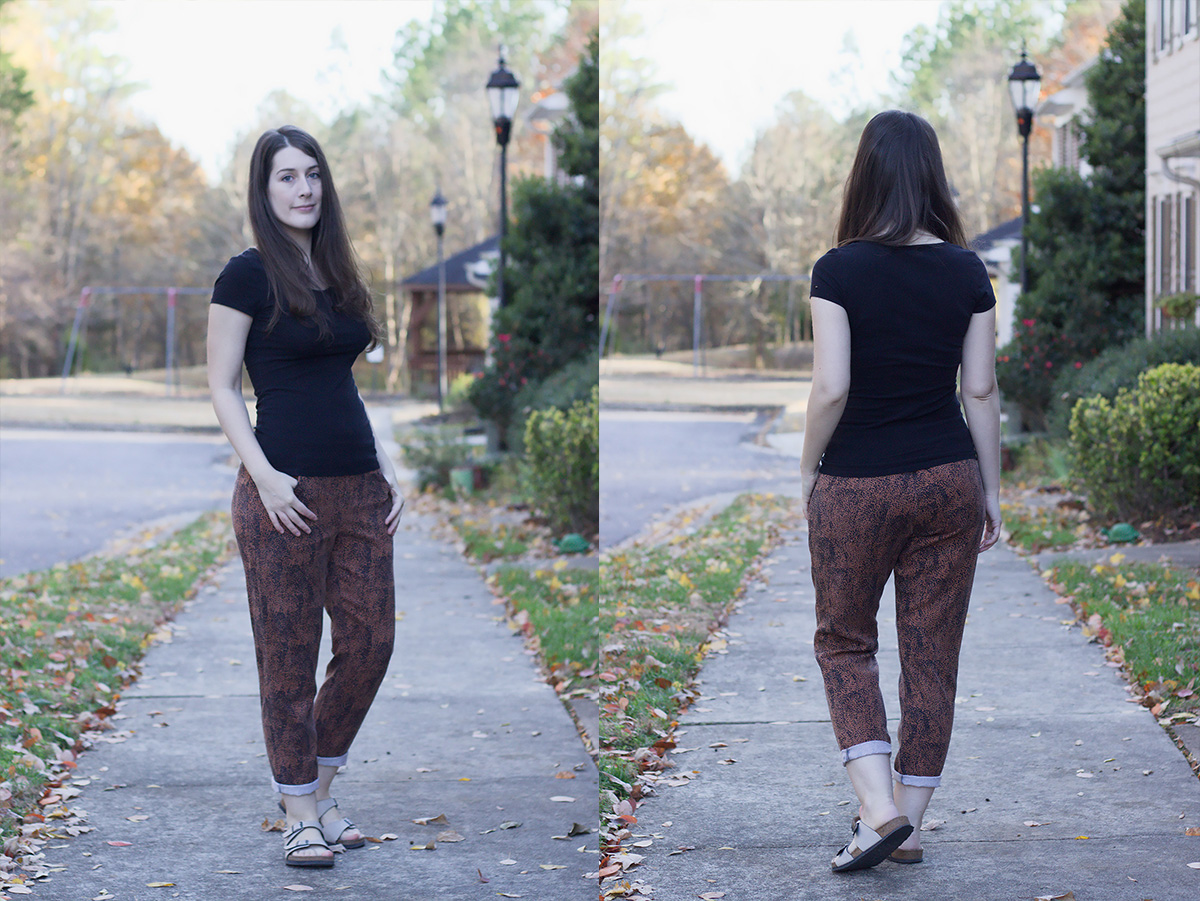
8. LA VESTE
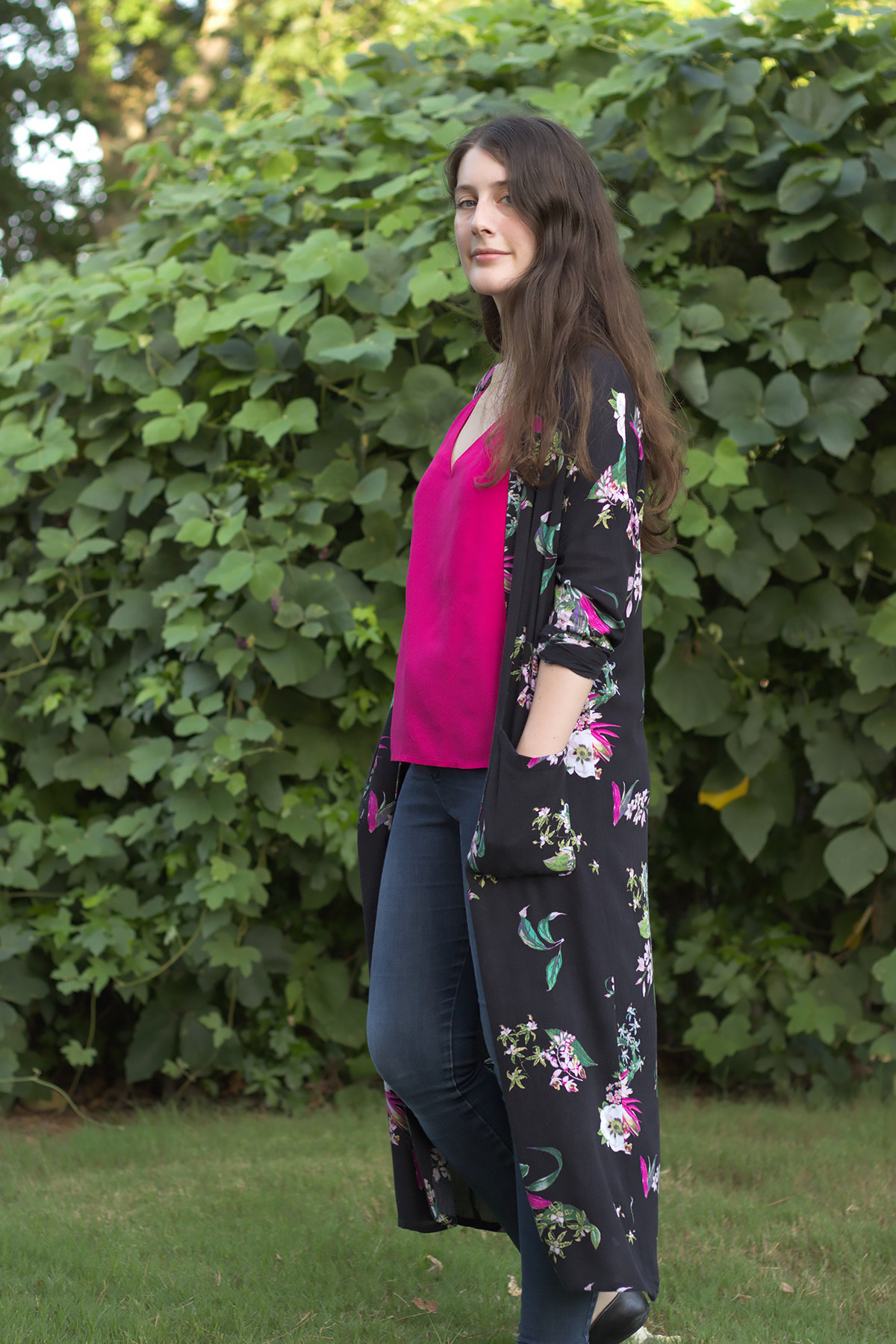
Unlike other patterns, I immediately saw the potential of the jacket for me: not in wool or linen as featured in the book, but in a light, twirling rayon for summer. I found this rayon crepe at Jo-Ann’s for my final muslin of the pattern. It was a bit of a default choice as their selection of non-polyester fabrics is very limited. The print is not that great but it is not ugly either, and I actually think that the fact that the floral pattern is a little sparse works well on such a large area of fabric.
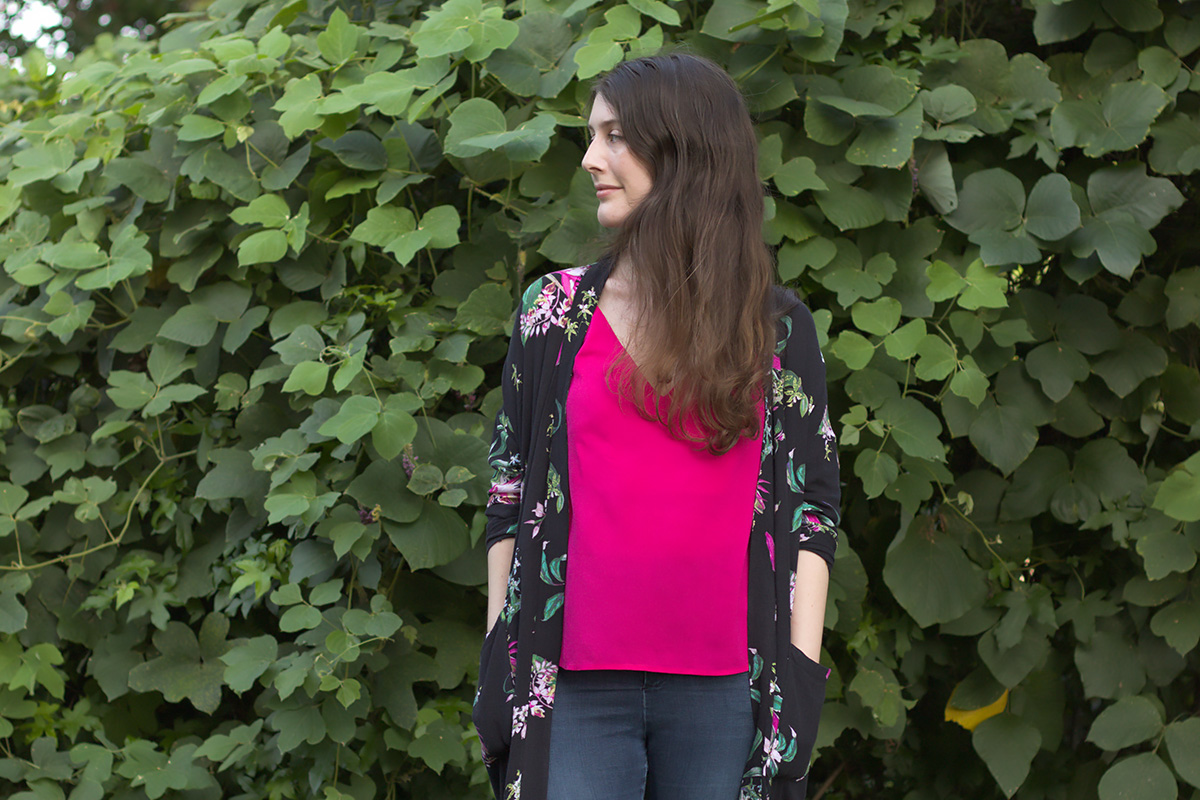
Well, for a muslin sewn quickly in a random fabric, this jacket is a resounding success! I wear it all the time: when life was normal, it was my go-to jacket to wear at the movies and wrap myself in to protect myself from the cold American AC. I particularly like it on jeans or shorts, and I was delighted to see when taking the pictures that it matched perfectly with my new fuchsia Pensée camisole!
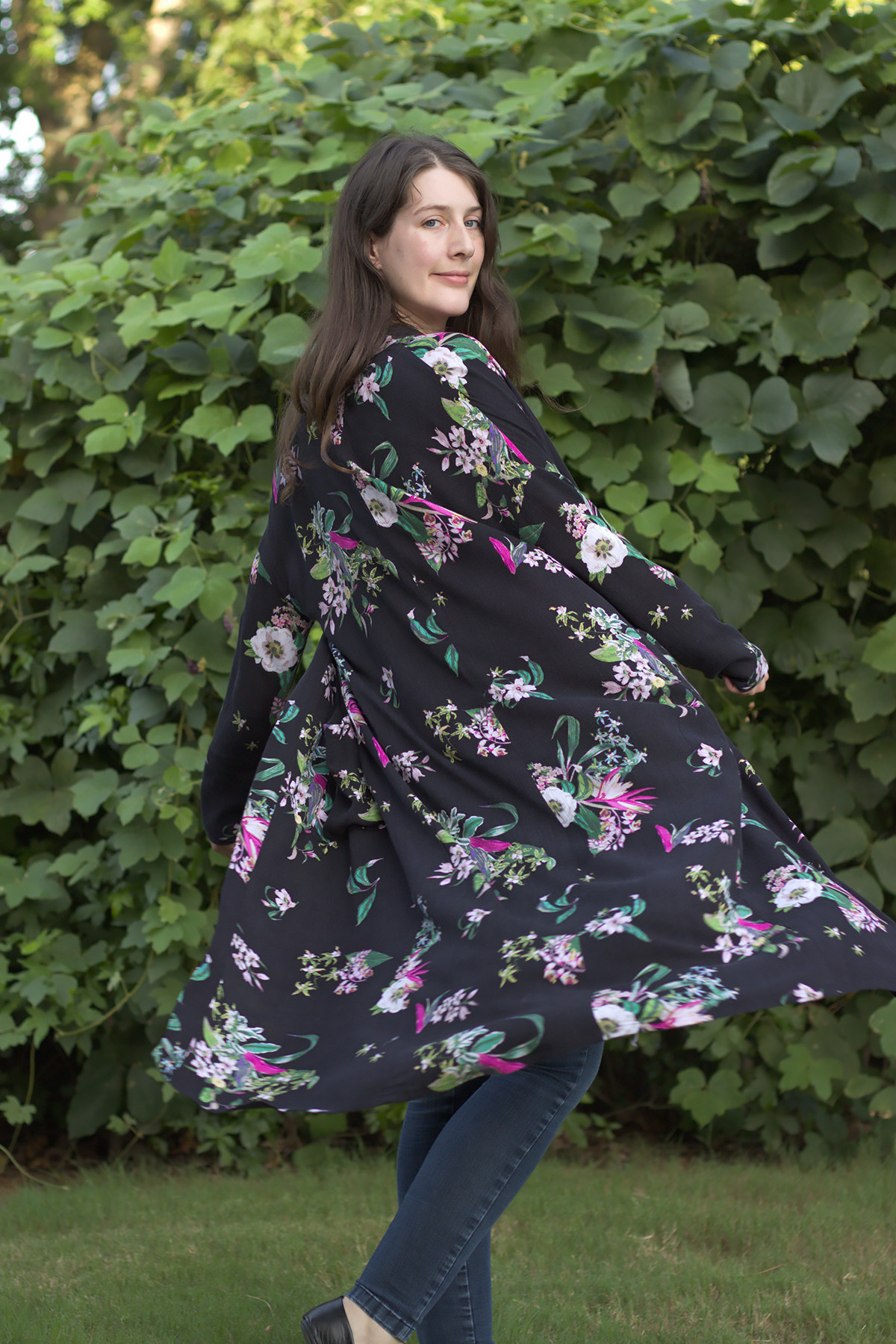
9. LA JUPE-CULOTTE
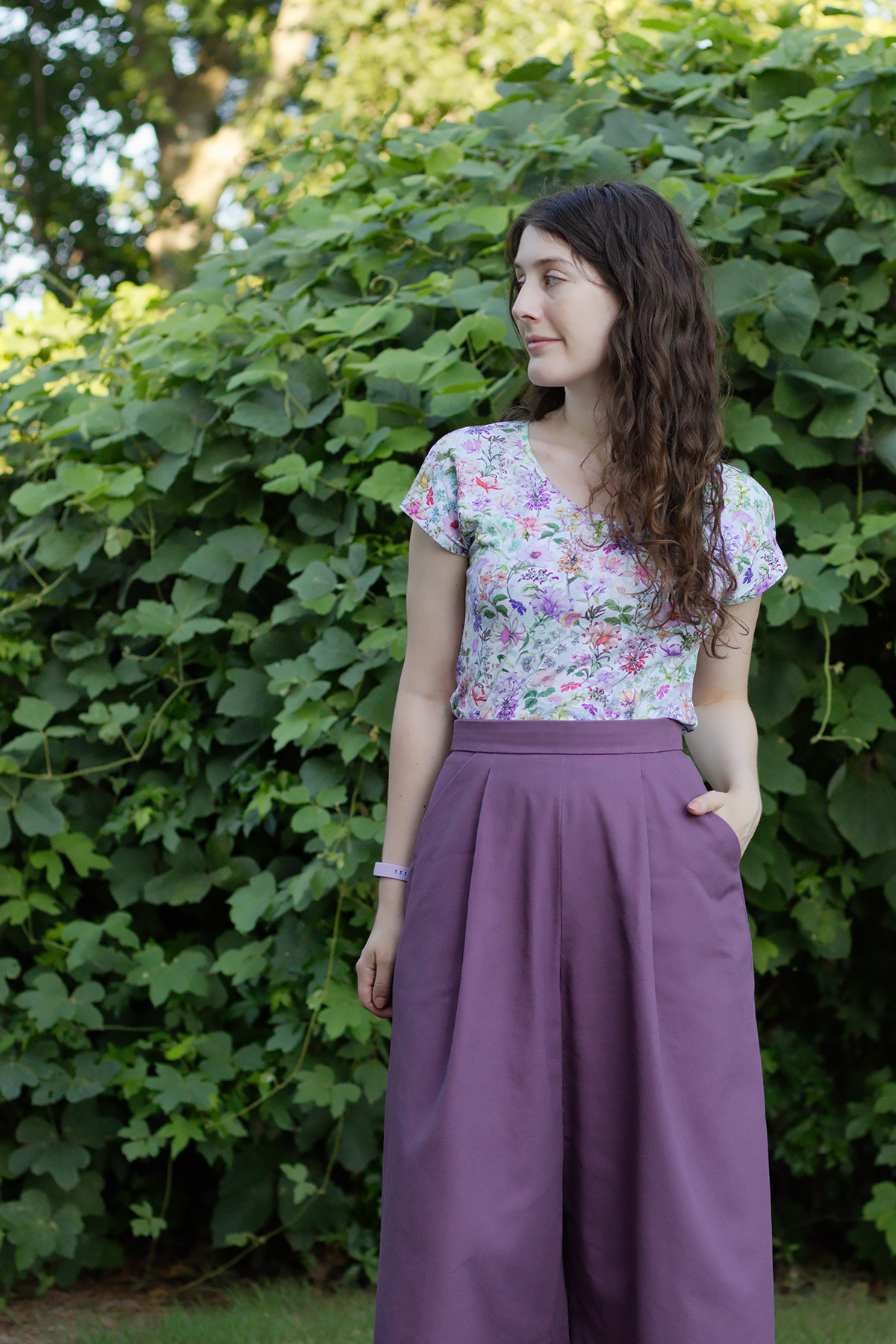
Alright, one last pattern and we’re done! The culottes are the most “complex” pattern in the book, meaning that they have darts at the back and a zipper, but other than that they are very easy and quick to make. For my version, I chose to deviate a bit from the recommended fabrics by opting for a 10 oz. cotton denim, above the medium weight recommended for this pattern. Do as I say, not as I do! The result is nice, it makes for a big statement piece with culottes that could almost stand up on their own, but it’s true that they would have been more comfortable if the fabric had been slightly lighter weight.
I haven’t made the shorts version yet for the same reason as the other pants pattern. These shorts are super flattering but their shape is very close to the Goji shorts and I already have three pairs of those. The full-length culottes though, I’ve already ordered a lovely corduroy that’ll be perfect for them…

And that’s it for all the clothes I sewed from the patterns in the Dressed book! I know it brings relatively little new information to see them on my figure given that I’m already posing for the photos in the book, but this way you also get my behind-the-scenes impressions. Let me know which one of the patterns is your favorite!
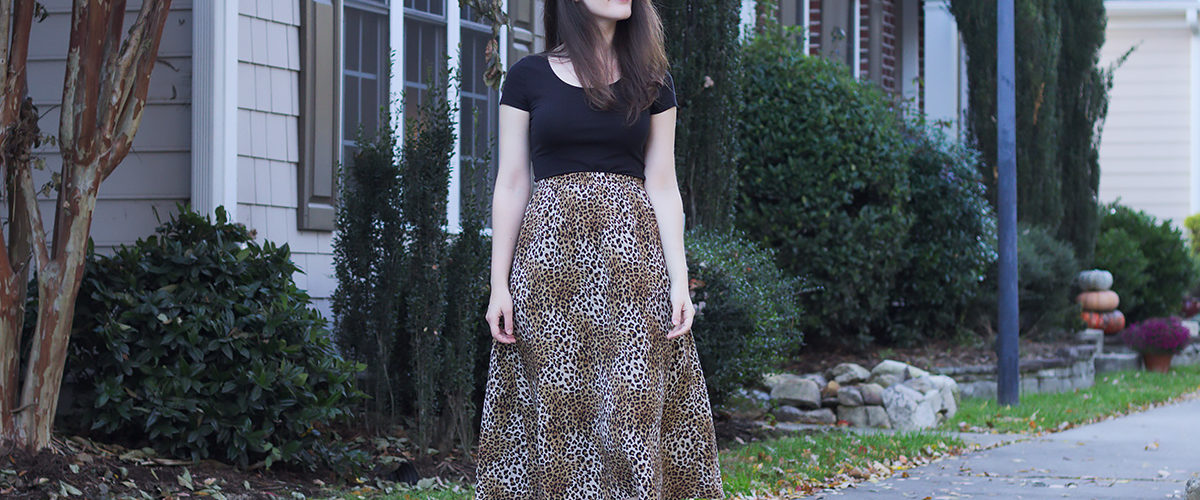
Welcome back! It’s so good to see you again. 🙂 I’m loving the floral tee and culotte combination: I’m impressed that you were able to match the colors to each other exactly, and they really suit you. The dress is also lovely, sweet without being twee. Maybe I’ve just been seduced by all the florals? Normally I find them too traditonal a print, but I like the ones you’ve picked. The pants look similar to the Itch to Stitch Tierras, which I’ve sewn, worn a ton, and need to blog—I missed my chance to photograph them earlier this week and have to wait for the sunshine to return!
The tee and pants matching was total luck and not planned at all! I was trying to figure out what to wear the t-shirt with for these pictures and realized that they went perfectly with the culottes I made last year. I guess I just really like purple!
I love everything you made! What a stellar collection. I got an email about the release but put it in my “save for another day” folder. Well you have definitely made me change my mind; I need to sew some of these up myself! Just beautiful!
I’m so glad! I hope you enjoy the book